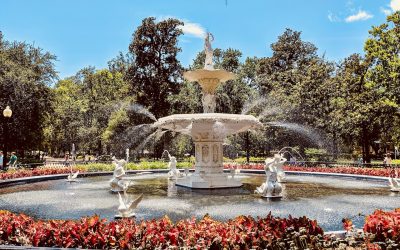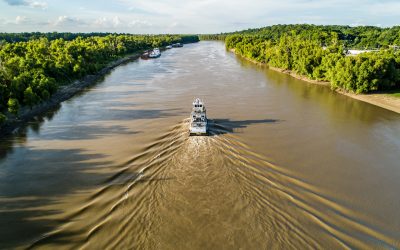When you hear the state name Connecticut, what’s the first thing that comes to mind? We’re guessing it’s not hats.
Back in 1809, straw hats were a big fashion trend, but not just any straw hats. These hats were made by Mary Kies, a native of The Constitution State. How did she make them? She wove silk and thread into straw! To prevent others from copying her hats, she applied for a patent from the US government. This meant that other people in this country could not legally make or sell these types of hats. Getting a patent was a big deal. Actually, huge. Here’s why: She was the first woman in this country to obtain a patent. It was signed by President James Madison, the fourth US president. The First Lady (the president’s wife) also sent Mary a letter of congratulations.
Several other “firsts” also happened in Connecticut. In 1828, the first American Dictionary was published and was made by Noah Webster in Connecticut. It was the first state to offer insurance. This will catch your attention – even lollipops were invented here! In 1908, George Smith of New Haven created them to make the candy easier to eat.
Do you know where Connecticut is on a US map? It’s in the northeastern region of the United States. It’s bordered by three states: New York, Rhode Island and Massachusetts.
What really happened
- At least 15,000 years ago, Connecticut was covered by a glacier.
- People started inhabiting the region roughly 10,000 years ago. Several thousand years later, the Mohegan, Pequot, Niantic and other Native American tribes lived in the region.
- The first settlers arrived in the area in 1614. They were Dutch fur traders who built a fort near Hartford, the state’s present-day capital city.
- Although both the Dutch and English created settlements in Connecticut in the early 1630s, the land soon became a British colony. Over time, the colonists became unhappy with British rule.
- Connecticut earned its nickname of “The Constitution State” because it adopted the Fundamental Orders of Connecticut in 1639. Many consider this to be the United States’ first written constitution. It established the structure and boundaries of the newly formed government and ensured the right of free men to elect their public officials; principles that were later embraced within the US Constitution.
- Between 1701 and 1874, Connecticut had two state capitals – New Haven and Hartford. But in 1866, the state decided to have one capital and chose Hartford.
- In 1776, Connecticut’s representatives joined others in signing the Declaration of Independence, which led to the American Revolution. The war lasted until 1783 when the colonies won freedom from British rule.
- Benedict Arnold was born in Norwich, Connecticut. To this day, his name is synonymous with the word “traitor”. In exchange for money and a command in the British Army, he led British troops in 1781 in the Battle of Groton Heights, which devastated the coastal city of New London.
- In 1788, Connecticut signed the US Constitution and became the fifth state to join the Union.
- Connecticut and Rhode Island were the only two states that didn’t ratify or sign the 18th Amendment, which prohibited the manufacture, sale or transportation of alcohol.
- Waves of immigrants from northern and western Europe helped the state grow and prosper in the early 19th century. There was a steady flow of English, Irish, Scottish, German and Scandinavian arrivals. In the 1820s and 1830s, the Irish made up more than one-third of the immigrants arriving in the country and in the 1840s accounted for nearly half.
- In 1848, Connecticut outlawed slavery. When the Civil War broke out in 1861, Connecticut fought on the side of the North.
Stuff you should know
- The state is named after the Connecticut River, a major river in this country that flows through the center of the state as well as three other states, including New Hampshire, Vermont and Massachusetts.
- Forest covers about 60 percent of the state.
- One of the state’s nicknames is the “Provision State” because during the American Revolution, it sent many supplies to the Continental Army.
- All county governments in the state were abolished in 1960. Another nearby state also has no county government. Do you know which one it is? The answer is at the end of this blog.
- Lake Candlewood is the largest lake in Connecticut. It’s 16 miles long, 3.2 miles wide and about 40 feet deep.
- The state can be divided into three geographic regions: the Western Uplands that feature steep hills; the Central Lowlands, which are filled with ridges and valleys; and the Eastern Uplands that boast hills, rivers, and dense forest.
- Crazy, funny or just plain weird
- Among the most haunted cemeteries in the country is Union Cemetery, which is located in Easton, Connecticut. One of the ghosts that supposedly lives there is called the White Lady. People who have seen her say she wears a bright white nightgown. Her face is hidden by a white bonnet or hat. Have you ever seen a ghost?
- During colonial times (1607-1775), all males of New Haven, Connecticut were required by law to have their hair cut the same length in a round trim. This was done by fitting a cap over their heads and then trimming around it. But when caps were scarce or lost, the colonists got creative. They used a hollowed-out pumpkin that was cut in half. That’s why New Englanders were nicknamed “pumpkin-heads”.
Tell me more
- In 1901, Connecticut became the first state to set a speed limit for cars – 12 miles per hour (mph) on city roads and 15 mph on country roads. Drivers also had to slow down or even stop near horse-drawn carriages or wagons to avoid scaring the horses.
- In 1903, the state was also the first one in the country to make residents register their cars and provide their own license plates. Two years later, the state began issuing official state license plates.
- The first helicopter that was able to fly took off in Stratford, Connecticut in 1939.
Can you name the other state that doesn’t have a county government? It’s Rhode Island.
Do you live in Connecticut or have you recently visited the state? If so, share something interesting about the state’s past or what impressed you about its land, people, mountains, lakes or rivers. Email it to info@adventuresofmo.com and we’ll publish it on Mo’s social media pages along with your first name, age, and state where you live!







